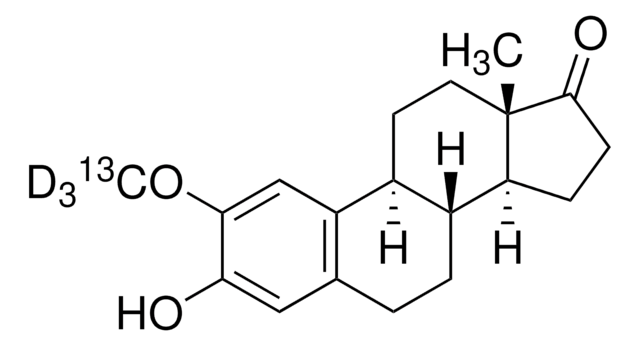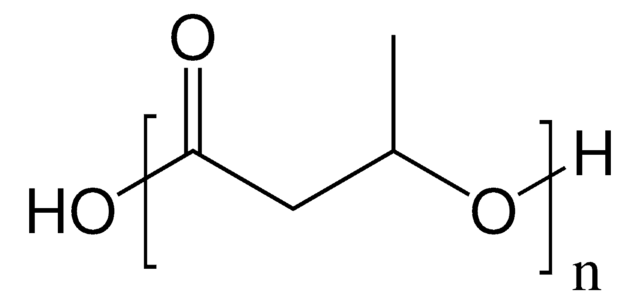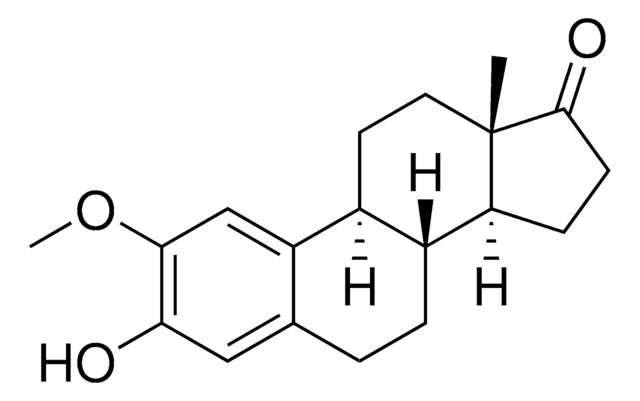Unfortunately, there is no molecular weight provided by the supplier for this product. The information is proprietary.
719846
Resomer® X 206 S, poly(dioxanone)
Synonyme(s) :
PDS
Sélectionner une taille de conditionnement
Sélectionner une taille de conditionnement
About This Item
Produits recommandés
Forme
solid
Niveau de qualité
Intervalle de dégradation
<6 months
Viscosité inhérente
1.5-2.2 dL/g, 0.1 % (w/v) in hexafluoroisopropanol(30 °C, Ubbelohde) (size 0c glass capillary viscometer)
Température de transition
Tg −10-−5 °C
Tm 110-115 °C
Température de stockage
−20°C
Chaîne SMILES
O1CCOC(=O)C1
InChI
1S/C4H6O3/c5-4-3-6-1-2-7-4/h1-3H2
Clé InChI
VPVXHAANQNHFSF-UHFFFAOYSA-N
Catégories apparentées
Description générale
Application
Informations légales
Code de la classe de stockage
11 - Combustible Solids
Classe de danger pour l'eau (WGK)
WGK 3
Point d'éclair (°F)
Not applicable
Point d'éclair (°C)
Not applicable
Faites votre choix parmi les versions les plus récentes :
Déjà en possession de ce produit ?
Retrouvez la documentation relative aux produits que vous avez récemment achetés dans la Bibliothèque de documents.
Articles
Main features of p-dioxanone, glycolide and lactide based copolymers
Interest in utilizing biodegradable polymers for biomedical applications has grown since the 1960s.
AliAliphatic polyesters, including polylactide and polyglycolide, are biodegradable polymers widely used in medical applications.
Immunosuppressive tumor-associated myeloid cells (TAMC) are responsible for glioblastoma (GBM) resistance to immunotherapies and existing standard of care treatments. This mini-review highlights recent progress in implementing nanotechnology in advancing TAMC-targeted therapies for GBM.
-
What's the molecular weight ?
1 answer-
Helpful?
-
Active Filters
Notre équipe de scientifiques dispose d'une expérience dans tous les secteurs de la recherche, notamment en sciences de la vie, science des matériaux, synthèse chimique, chromatographie, analyse et dans de nombreux autres domaines..
Contacter notre Service technique








